Editor’s note
The following article is republished with permission from the March 2020 issue of MM&M. The world has changed dramatically since we interviewed leaders at Lyft, Best Buy, HHS, Salesforce, and CareMore and Aspire Health earlier this year. However, their “big bets” are quite prescient; these new approaches are even more important during our pandemic present and will likely impact our post-pandemic future.
This month, we asked the leaders we interviewed how their thinking or approaches have changed — if at all — in response to the coronavirus pandemic. Their responses are included as italicized updates following each profile.
Published March 2, 2020 · Last updated June 25, 2020
In healthcare, each decision has the potential to impact human life, but some bets are bigger than others. A “big bet” has the potential to upend a business model and transform an entire organization — maybe an entire industry. These outsized risks don’t just aim to produce better outcomes at a lower cost; they reimagine the way real people experience healthcare. Of course, the potential for reward is usually proportional to the potential for failure. Big bets ask executives to put their reputation on the line. Succeed or fail, big bets will become business school case studies. Here are five examples of organizations going all in.
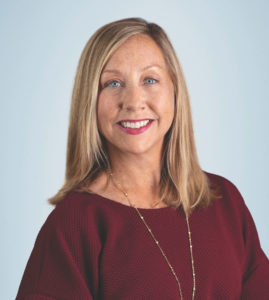 Lyft goes big on non-emergency medical transportation
Lyft goes big on non-emergency medical transportation
Megan Callahan, VP of Healthcare, Lyft
Transportation options have dramatically changed over the past decade. According to a Pew Research Center survey, 36% of Americans had used a ride-hailing app in 2018, up from only 15% in 2015.
Despite the increase in options, 3.6 million patients miss their doctor visits each year due to transportation, resulting in $150 billion in wasted spending and poor outcomes. As a result, most Medicare Advantage and state Medicaid programs provide what is known as non-emergency medical transportation (NEMT) benefits. When an eligible patient needs transportation, NEMT brokers, such as American Medical Response or LogistiCare, work with local medical transportation providers to book and schedule the most appropriate ride. These providers tend to be hyperlocal small businesses that need to build a network of drivers.
Enter Lyft’s big bet on health: making use of its 2 million drivers and a B2B backend platform to provide NEMT. “The ecosystem is what sets us apart,” says Lyft VP of Healthcare Megan Callahan. She notes the customer receives the benefit of a national, tech-driven service with a locally sourced driver. “The strength of the Lyft network allows us to be there in 2-7 minutes.”
When a patient needs a ride, anyone can call a ride for them. The patient does not need a smartphone; a text or an automated phone call to a landline will let the patient know the name of the driver and type of car that will be outside at a certain time. To ensure high-quality and confidential service, Lyft will only send a driver that has passed the required checks. However, the driver is never aware of the purpose of a trip.
Of course, not every patient is appropriate for a Lyft ride. “You need to be able to walk and get into the car,” Callahan says. “But as we take on more volume, it frees up capacity for wheelchair-accessible vehicles or other higher acuity rides.”
From a business perspective, “There are a host of complexities when entering health spaces, and it’s important to have a team that understands that,” explains Callahan, who adds Lyft has more than 100 people working on this, including dedicated legal, compliance, business development, customer support and partnership staff.
Transportation, just like healthcare, is a highly regulated industry. Lyft’s ability to navigate these landscapes helped it become the first to enroll with Medicaid in Arizona. “Over the course of the year I’ve been at Lyft, we have prioritized working with Medicaid agencies to modernize their programs,” Callahan says. “Now we are an official transportation provider in over six states. We started a domino effect.”
The benefits of this big bet outweigh the risk. She reports customer satisfaction is high, and Lyft rides are quick and discreet, compared with a typical six-person shuttle trip that may take two hours. More rides also translate to more revenue-generating opportunities for their drivers, especially given that many NEMT rides are outside of rush hour.
“Medicaid has paid for transport since the mid-’60s. Lyft can modernize their programs and improve the patient experience,” Callahan explains. “It’s a fragmented non-tech market. Our technology platform provides on-demand rides; direct routes; combats fraud, waste and abuse; and much more. We have a real opportunity to take something that has been around forever and do it more efficiently with a better patient experience.”
While NEMT is the first step, Callahan welcomes the move for plans to also provide transportation to a gym, a community event, or a grocery store; Lyft already offers subsidized rides for people living in food deserts. The larger question, however, is aligning financing with need. “We know how to finance medical care — there’s a playbook,” said Callahan. “But as we move to making sure someone isn’t lonely or can get to the grocery store or see their granddaughter –– how much would you pay for that?”
June 2020 update:
“COVID has highlighted the importance of reliable transportation for essential healthcare appointments and transporting essential healthcare workers to the front lines, as we have seen public transport or multiload shuttles become less safe. Since the writing of this article, we are now able to provide eligible Medicaid patients rides in 14 states and the District of Columbia, as state agencies realized the need to find additional transportation options for their Medicaid beneficiaries. We’ve also seen health systems react quickly to support their teams with Lyft for their Essential Worker Commute programs. We’re proud to have been able to provide those services during such a critical time.”
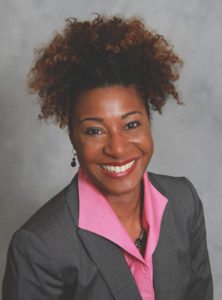 Best Buy Health wants Americans to age in place
Best Buy Health wants Americans to age in place
Amelia Hardy, Senior Director for Enterprise Relationship Management, Best Buy Health
Best Buy, America’s largest specialty electronics retailer, has been credited with surviving in the age of Amazon thanks in part to the success of its Renew Blue strategy. Following one of the biggest turnaround stories of the decade, the company known for selling consumer gadgets, computers and entertainment systems has named a new key growth initiative: Best Buy Health.
For Amelia Hardy, Senior Director for Enterprise Relationship Management, an emphasis on health and the aging population was obvious. “The company’s mission is to enrich lives through technology,” says Hardy, who notes that 10,000 people in America turn 65 every day, and about two-thirds of those seniors have one or more chronic diseases. Chronic conditions are frequently monitored through a cross-section of devices and services, many of which are consumer-grade. Furthermore, as more Americans seek to age in place, health tech such as personal emergency response systems (PERS) will become part of the consumer electronic suite.
“Seniors are already our customers,” Hardy says. “It’s a logical progression of our core capabilities and strengths.” Today, the organization serves an estimated 1 million seniors, and over the next five years it aims to reach 5 million.
In the past two years, Best Buy has acquired in-home monitoring company Great Call, remote senior-monitoring service Critical Signal Technologies and clinical-grade wearable maker BioSensics. These acquisitions place a clear stake in a commercial health business that Morgan Stanley estimates could generate up to $46 billion in revenue.
By combining the capabilities for these services under one roof, Best Buy has created something of a Geek Squad, but for aging in place. “Our PERS device with Care Center Support allows us to see if it really is an emergency situation or if there’s something else we can do, even from a social determinants of health standpoint, to help that senior,” Hardy explains.
For example, a senior can alert the system if they have fallen, but the system may also flag that a smart refrigerator hasn’t been opened for two days, prompting a call. “With the Lively Home ADL monitoring system, we’re able to use AI and algorithms to learn what a typical pattern is for that person and then understand when they’re deviating from that pattern.”
For adults who also serve as caregivers for their parents, these services have dramatically changed their relationships. Rather than spending daily phone calls ensuring a parent has slept, eaten or taken medications, “With the sensor system, we get all that data and we will flag you if something’s wrong,” Hardy says. “We can actually focus on the things that mean the most to us as we continue to age.”
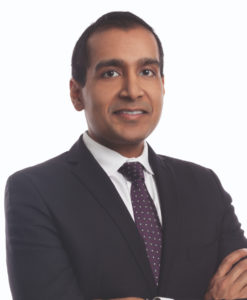 CareMore and Aspire Health bring healthcare home
CareMore and Aspire Health bring healthcare home
Dr. Sachin Jain, former President and CEO, CareMore and Aspire Health
Sachin is now Incoming President and CEO, SCAN Group and Health Plan.
For much of history, the doctor came to the patient. But by the mid-1950s, the rise of new technologies resulted in shiny new clinics and hospitals, requiring patients to come to the doctor. Today, new technologies — primarily internet access, sensors and smartphones — are swinging the pendulum back to delivering care at home.
“Home will be the new center of where healthcare is delivered in the U.S.,” says Dr. Sachin Jain, President and CEO of CareMore and Aspire Health. “When you look at the increasing capabilities of remote healthcare, there is a growing realization that frail, sick patients should not be congregating together in waiting rooms and doctors’ offices.”
He points to advances across other sectors, where companies such as Amazon and Uber are reinventing logistics at scale. “Healthcare can be radically decentralized and the quality and convenience of care can be massively improved,” he adds.
Aspire, the largest home-based palliative care in the country, falls under Jain’s purview. Historically hospital-based, Jain sees the move to the home as a fundamental transformation of end-of-life. “We are bringing this to the home, to the living room, where you can have the kind of conversations you need to have,” Jain says.
Jain’s organization also provides primary care at home. “In Connecticut, we are assuming full primary care for some of the sickest, mobility-impaired, dual-eligible Medicare/Medicaid patients that ordinarily would have to travel,” he explains. While doctor visits increase cost, the initiative has reduced hospital stays. In addition to being better for the patient, “it becomes transformative from a cost management perspective.”
Perhaps the most progressive transition of care is the concept of “hospital at home.” Jain shared how his organization took care of more than 600 patients whose medical conditions would have likely qualified for admission to a hospital. “We directly admitted them back to their home and supported them with treatments and a clinical team that would have only been available in the hospital.”
For Jain, the home is often better for patients and caregivers. “Think about the traditional acute setting: uncomfortable chairs, you get kicked out of the room. It’s difficult for the family and caregivers.” The rise in hospital-acquired infections presents a significant challenge to the modern healthcare delivery infrastructure.
While CareMore and Aspire are traditionally associated with serving senior patients in Medicare Advantage plans, they are increasingly serving other frail and vulnerable populations and have a combined presence in 32 states, serving 21,000 patients with severe illness. “Primary, acute, palliative — all of it is possible when you are enabled by the right logistics, tools and culture to care for people.” explains Jain, who emphasized his organization’s growth ambitions.
However, there are pockets of resistance. Some suggested that this puts pressure on family caregivers. Jain said the goal is to provide all the necessary support, noting the trips to the hospital are also highly burdensome.
But the industry itself may be the greatest barrier. Large hospitals are capital-intensive and need to keep beds full. For those with overflow, the transition to care at home is very desirable. But when beds are empty, home care may be perceived as competition. Jain notes this shift won’t require policy or regulation. “It’s a change in business model, mindset and focus.”
June 2020 update:
“COVID-19 has given us yet another reason why the home will be the center of care going forward. The idea of bringing people together to risk infecting one another in clinical settings appears more antiquated than ever.”
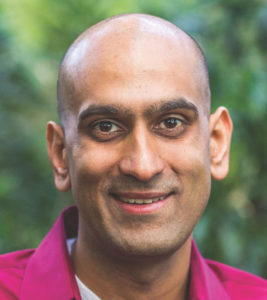 HHS looks to end the need for dialysis
HHS looks to end the need for dialysis
Sandeep Patel, former Open Innovation Manager, U.S. Department of Health & Human Services, and KidneyX cofounder
Sandeep is now Director of Division of Research, Innovation, and Ventures (DRIVe), Biomedical Advanced R&D Authority (BARDA) and Assistant Secretary for Preparedness and Response (ASPR), U.S. Department of Health & Human Services.
Each day, 340 people begin dialysis treatment for kidney failure, and they spend twice as many days in the hospital as transplant patients. Some patients are candidates for a kidney transplant, and nearly 100,000 Americans are on the waiting list. Of those, 13 people die each day waiting for a new kidney.
For Sandeep Patel, Open Innovation Manager at the U.S. Department of Health & Human Services, this is unacceptable. “We need to deliberately shine a light on the alternatives,” he pleads.
These alternatives range from reimagining dialysis to completely eliminating the need for it through an artificial kidney. “This could mean a wearable, surgically implanted or biological replacement. But we need one that sustains life with full function.”
Patel cofounded KidneyX in partnership with the American Society of Nephrology (ASN) in 2018. KidneyX aims to use prize competitions to accelerate the development of innovative solutions that can prevent, diagnose or treat kidney diseases.
Last year, this initiative received additional firepower through an executive order that clearly outlines what must happen to foster better care and outcomes. First and foremost, an awareness campaign is needed. While more than 14% of American adults are living with kidney disease, it’s rarely discussed.
The way we pay for kidney care also must be reconsidered. The U.S. government spends $100 billion annually on kidney care for Medicare patients. Dialysis is one of a handful of treatments that qualify for coverage, regardless of the patient’s age.
While the initial intent was admirable, “payment is for a specific treatment, so it stifles creativity,” Patel says. He’d like to see additional emphasis on prevention, delaying kidney failure and identifying transplant options.
“The other part is testing new payment models in Medicare or Medicaid,” Patel continues. “If we shift the payment structure to get people transplants, we will need more kidneys.”
This set into motion a number of new initiatives to fix a broken organ transplant system, which is not currently measured by the lives saved. “We have fixed the rules by which they are evaluated,” Patel explains. People can also get a kidney from a living donor, which costs money. While HHS currently has programs to cover some of these costs, Patel’s aim is to expand the population of eligible donors through additional coverage.
While all of this is heartening, “Transplants aren’t cures and don’t last a lifetime,” says Patel, leading into the moonshot portion of the executive order: the artificial kidney. Through the KidneyX accelerator, HHS has created opportunities for collaboration and funding, both public and private.
“We have done all that we can to signal this opportunity,” explains Patel, who now looks for the broader science, innovator and investor communities to build a pipeline of potential solutions. But looking to the future, Patel is bullish. “If everything works out, anyone whose kidneys fail will be able to live a near-normal life.”
June 2020 update:
“The unpredictable demand for organ transplants, as the COVID-19 pandemic has clearly highlighted, compels us to think hard about not wasting even a single possible organ, and to keep pushing new technologies that can create ways to deliver or obviate the need for transplants.”
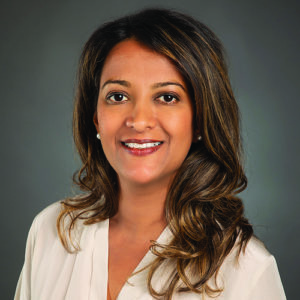 Salesforce bets on the patient’s digital front door
Salesforce bets on the patient’s digital front door
Dr. Ashwini Zenooz, Chief Medical Officer and SVP for Healthcare and Life Sciences, Salesforce
The typical check-in process at a doctor’s office requires patients to fill out the same information each time they visit. Contrast that with a typical online shopping experience: When you’re checking out, you often have an option to use information already saved in your account and the entire transaction experience is optimized to be as frictionless as possible.
Nearly every person at the intersection of health and tech laments this disparity, but Salesforce’s health and life sciences team has made it their mission to be at the digital front door. “Whether a consumer is interacting with a hospital, an insurance company or the pharmaceutical company they get their medication from, we want them to have that same kind of omnichannel experience you would have when you’re interacting with a retailer,” says Dr. Ashwini Zenooz, Chief Medical Officer and SVP for Healthcare and Life Sciences at Salesforce.
For this to be true, a few things need to happen in health: The information needs to flow into one place, the systems must be HIPAA-compliant and the tools need to deliver a digital experience that meets consumers’ expectations. This is far easier said than done in a complex industry filled with legacy systems. For Salesforce, this big bet was an organic evolution.
Founded in 1999, Salesforce has served health and life sciences companies — including providers, payers, pharmaceuticals and medical device companies — for more than 20 years. As Salesforce acquired and built new capabilities, these same clients started making new requests to use Salesforce solutions that were HIPAA-compliant for personally identifiable information. “We’re not new to healthcare,” Zenooz notes.
Today, Salesforce provides solutions to a broad cross section of clients in the healthcare industry, which in turn serve patients and caregivers. In this sense, the company’s solutions are pipes: They centralize and send information and serve it up in the right place at the right time. The consumer is not aware they’re using a Salesforce tool when chatting or texting with a hospital or payer. It’s up to Salesforce’s customer to determine how much data to share with a patient. The company also doesn’t store or look at the data.
For Zenooz, this mission is also personal: “The whole reason I left a full-time practice of medicine was because my mom was one of those patients.” At weekly appointments, Zenooz observed she was giving out the same exact information every single visit, sometimes multiple times a day. The amount of time spent on knowledge transfer could be better utilized delivering care. In the end, sometimes the most mundane optimizations can make the biggest difference in health. “People are looking for science-fiction solutions, but it’s the simple things that could really change healthcare.”
June 2020 update:
“With the coronavirus pandemic, we’ve seen how a digital front door and digital patient engagement strategies are critical – for keeping patients informed, triaging potential COVID-19 patients and routing them on the appropriate care journey, and engaging patients/members who need non-covid care or therapeutics. As the pandemic is still a visceral reality across the globe and in the U.S., a digital engagement cadence is key to rebuilding trust with patients as healthcare resumes its non-emergent non-COVID-19 and services.”
The Lab Report helps executives make sense of emerging trends and new opportunities. Sign up for the newsletter, and we’ll send insights straight to your inbox.


